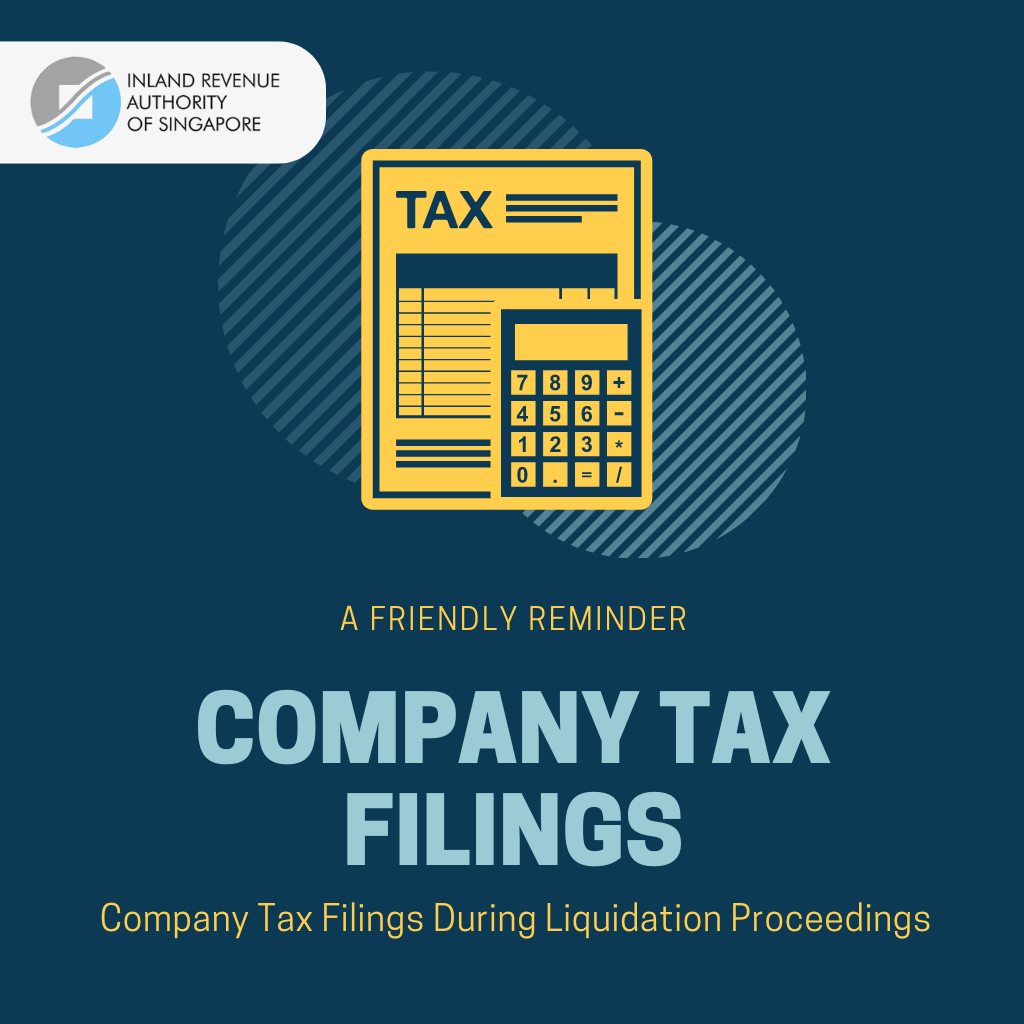 1
1
SHOPPING CART

During liquidation, companies must fulfill specific tax obligations before the process can be finalized.
Duties of Liquidators
When a company undergoes voluntary or compulsory liquidation, a court-appointed or company-designated liquidator assumes responsibility for the company’s affairs. This includes fulfilling specific duties outlined in the Income Tax Act of 1947.
The liquidator for a company undergoing voluntary or compulsory liquidation is responsible for several key tax-related tasks:
To minimize their carbon footprint, liquidators are encouraged to submit all documents, including the Declaration of Receipts and Payments, electronically to IRAS via ctmail@iras.gov.sg. This eliminates the need for duplicate hard copies.
Before finalizing the liquidation process, the liquidator can verify the company’s tax status electronically on mytax.iras.gov.sg . IRAS no longer issues tax clearance letters for companies in liquidation.
To confirm no outstanding tax matters or liabilities exist, the liquidator can access these documents:
Once the liquidation process is complete, the liquidator is required to retain the company’s books and records for at least five years from the dissolution date.
Filling Requirement
The frequency of filing the Declaration of Receipts and Payments (Declaration) for companies in liquidation depends on their ongoing income:
An important change implemented on 1 May 2021, simplifies the filing process. Companies in liquidation no longer need to separate receipts and payments based on the calendar year. This aligns with the Insolvency, Restructuring and Dissolution Act 2018 (IRDA). Under IRDA, liquidators prepare a 12-month account of the company’s finances starting from their appointment date, and for every subsequent 12-month period. This 12-month period can be used directly when filing the Declaration, eliminating the need for calendar year splitting
Example
Let’s illustrate the new filing process. Suppose Company A began liquidation on 25 August 2022. The liquidator would prepare an account of the company’s receipts and payments for the 12-month period following that date, ending on 24 August 2023. This same 12-month period can be used directly when filing the Declaration with IRAS. There’s no need to split it into two separate periods based on the calendar year (25 August 2022 – 31 December 2022 and 1 January 2023 – 24 August 2023).
Companies in liquidation with ongoing income must file a Declaration of Receipts and Payments (available as a 128KB PDF) with IRAS annually. The deadline for filing is within one month of the period covered by the declaration.
Example
Let’s use Company A as an example. Assuming they began liquidation on 25 August 2022, with ongoing income, here’s the filing process:
Example
Continuing with Company A’s example, suppose they decided to call a Final Meeting on 21 June 2023 (within the 6-month window from 21 December 2023). Here’s what follows:
Example
If Company A schedules its Final Meeting for 21December 2023, an additional step follows:
Companies in liquidation without ongoing income (receipts) are required to file a Declaration of Receipts and Payments (available as a 128KB PDF) with IRAS only once every four years.
However, if the Final Meeting is scheduled within this four-year period, the following applies:
Example
Let’s illustrate the filing process for Company B, which began liquidation on 1 June 2021, with no ongoing income.
Example
If Company B schedules its Final Meeting for 15 August 2023, they must submit their final financial statements to IRAS after the meeting. These statements cover the entire liquidation period, from 1 June 2021, to the 15 August 2023, Final Meeting date.
For a more detailed overview of the liquidation process and filing requirements, you can view these resources:
Filling Requirement
Companies undergoing judicial management or receivership are still required to fulfill their annual corporate tax filing obligations with IRAS. This includes submitting:
For more information on filing these forms, visit our guide on how to file Form C-S/ Form C-S (Lite)/ Form C.
The judicial manager/receiver, if authorized through Corppass, can also access the company’s tax filing status, assessments, and payments on mytax.iras.gov.sg . Learn more about accessing digital services at mytax.iras.gov.sg
If your company needs help filing taxes for the year 2024, or requires assistance with Singapore incorporation, economy, banking, etc., feel free to call/WhatsApp us at +65 90612851 or email us at aceglobalacct@gmail.com. Alternatively, you may leave us a reply using our contact form below.
Keep in touch to receive the latest listing, news updates and special offers delivered directly to your inbox.
